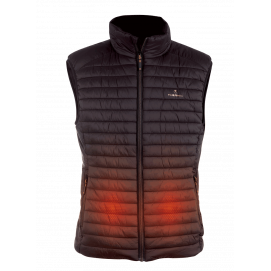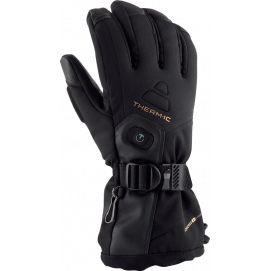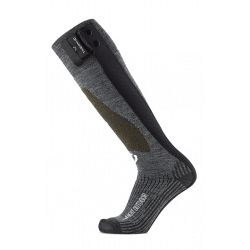 The Casual Powerjacket, the heated jacket you need this winter Read more
The Casual Powerjacket, the heated jacket you need this winter Read more How does the temperature of the human body work?
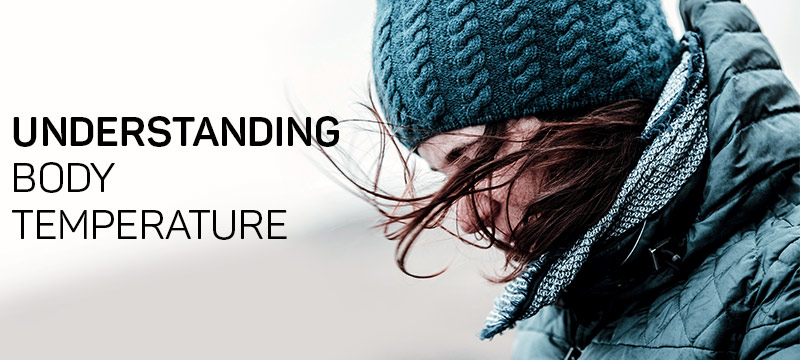
Regardless of the conditions, whether hot or cold, the human body regulates itself to maintain its temperature at 37 °C, temperature at which its metabolic and muscular functioning is optimal. Man, formidable machine, is qualified to be homeothermic because we are able to maintain our internal temperature around a target value of 37 °C. This is thanks to different processes that are naturally activated when the body feels too hot or too cold. Here is how the regulation of the body climate works...
37 °C, target value
Regardless of the environment, from the extreme cold of the Siberian steppes to the sweltering heat of the Arabian Desert, the humidity of the Amazonian forests to the mountainous Himalayan ranges, the human being adapts and seeks to maintain the body at a constant temperature of 37 °C. Because it is at 37 °C that its cells and muscles are the most efficient. It is thus a "warm-blooded" being said to be "homeotherm" unlike "cold-blooded" species, described as poikilotherms whose internal temperature follows that of the ambient air.
To be more precise, the body temperature of the human oscillates between 36.1 °C, in the middle of the night, at the moment where the metabolic functioning is the calmest, and 37.8 °C, at the end of the afternoon, at the peak hour of activity.
Two rooms, two ambiances
If the average temperature of the human being is 37 °C, it is not homogeneous throughout the body. Indeed, the human body consists of two distinct areas. Two rooms, two ambiances. Two parts, two atmospheres:
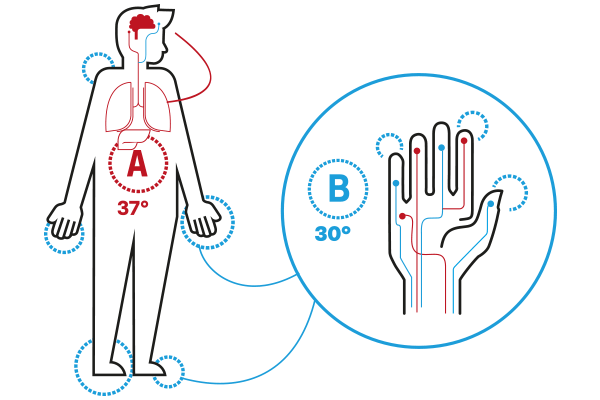
A - The central zone, called "nucleus" or "trunk", which includes all the noble organs absolutely necessary for our survival (respiratory, digestive and cerebral systems), whose temperature must absolutely be maintained at around 37 °C.
The human body, this Formula 1
The body is a great machine. Its thermal self-regulation can also be compared to a gleaming automobile whose operation is based on:
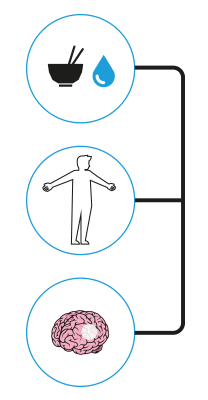
Its role is crucial because, located in the brain, it acts as a control centre whose function is to continuously analyze the information from the skin's blood receptors and cutaneous thermoreceptors. Once this temperature information has been received, it compares it to the target value and then activates the mechanisms specific to self-regulation.
Different temperature flows: heat supply and loss mechanisms
Maintaining a constant temperature implies for our body a perpetual search for balance. An exercise of a tightrope walker on a wire, that of the 37th degree Celsius. The human body is a balancing actor which juggles between different processes and heat flows to interact with its environment.
RADIATION RADIATION is the thermal exchange that takes place in the form of infrared diffusion between the human body and surrounding elements whose temperature is different. It is for example by this phenomenon of RADIATION that the body warms up by absorbing the sun’s rays. CONVECTION CONVECTION is defined as the exchange of heat between our body and the ambient fluid in which it evolves: air or water. For each of these fluids there is an isothermal point. The isothermal point is the temperature below which the human body, in this given environment, loses heat. It is 25 °C for air and 37 °C for water.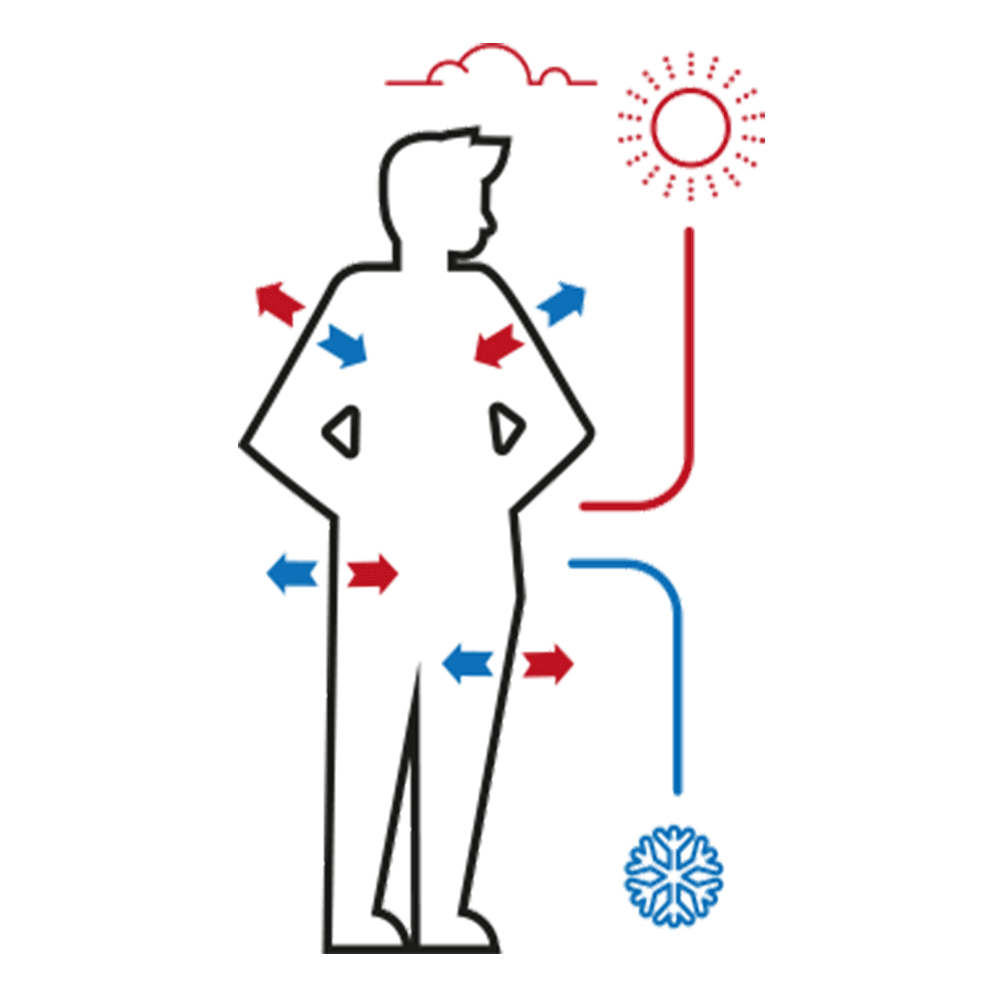
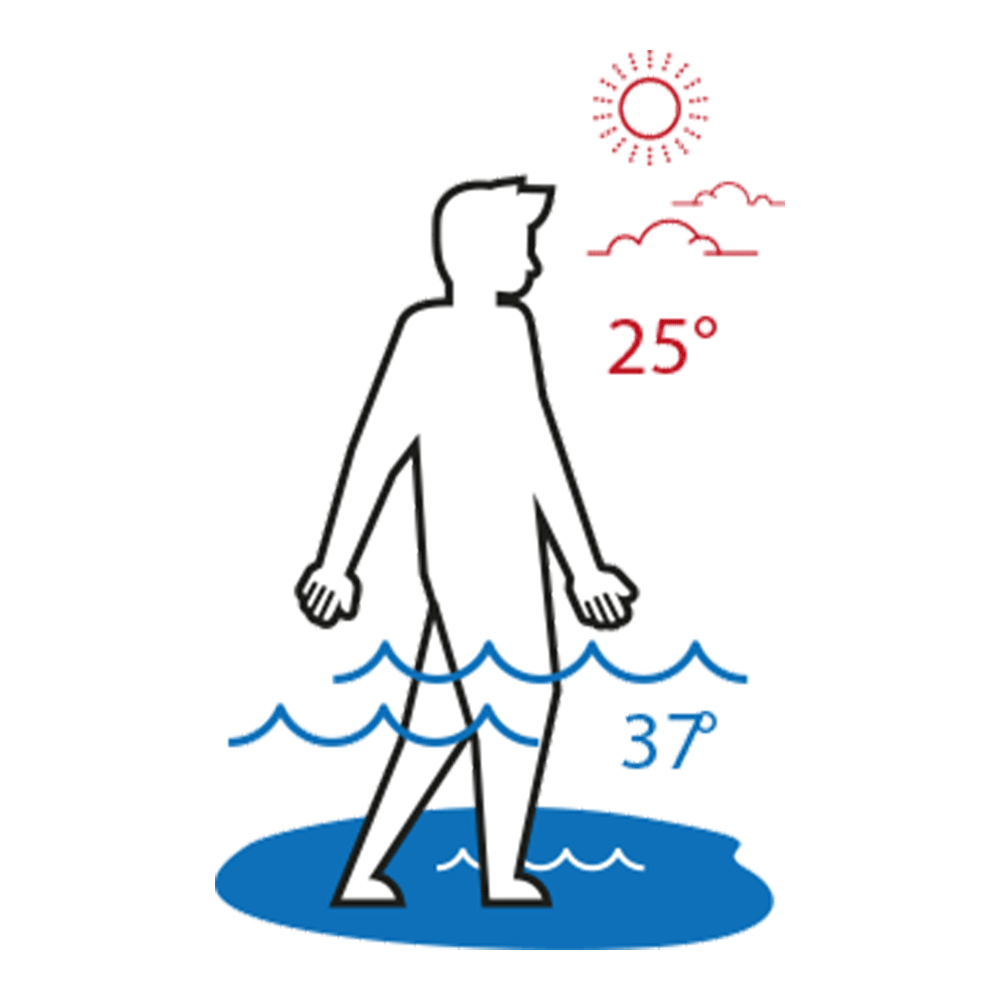
CONDUCTION
CONDUCTION refers to the heat exchange between two bodies in contact, without moving one in relation to the other.
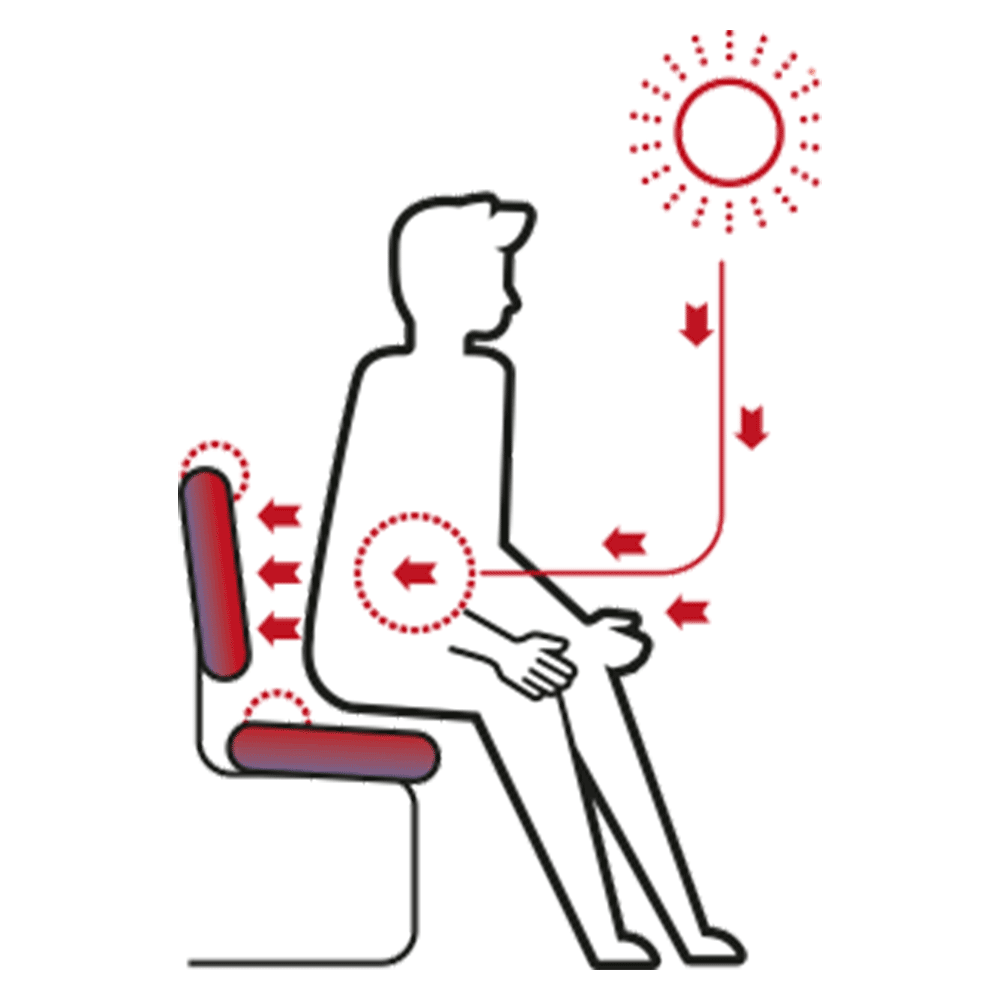
The fact that a chair is hot after sitting there for a while is a very good example of this phenomenon.
EVAPORATION
Evaporation is the heat loss associated with the secretion of water by our body.
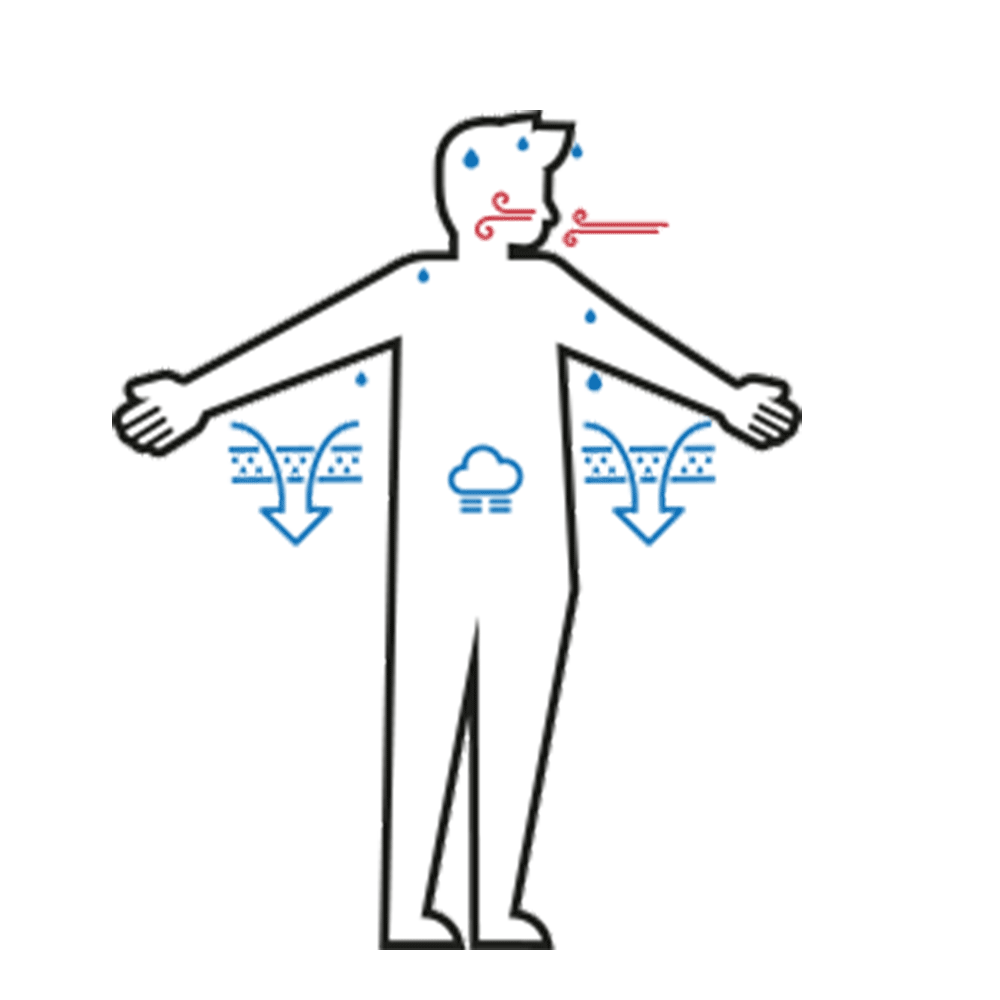
This EVAPORATION can be:
• Passive, via BREATHING => the air we breathe is loaded with moisture.
• Active, by TRANSPIRATION => the body then creates a layer of water on the skin in order to cool down.
Evaporation accounts for about 25% of heat loss at rest, but can be as much as 80% during exercise, especially because of perspiration, during physical activity.
WHEN THE BODY GETS TOO HOT…
Here's how your body protects itself from the risk of "overheating":
- It dissipates and expels the surplus of internal heat towards its external environment. This is called thermolysis.
- This thermolysis passes through the various transfers mentioned above, especially the evaporation of heat by sweating. Sweating notably allows the appearance of a fine particle of water on the surface of the skin to lower the skin temperature.
- The body practices circulatory adjustment. That is to say that it undertakes a vasodilatation of the blood vessels, the diameter of which increases, to promote the blood flow and therefore the expulsion of heat.
WHEN THE BODY GETS TOO COLD…
Here’s how your body reacts to the risk of freezing on the spot:
- It creates internal heat through metabolic activities. This is called thermogenesis.
Shivering is one of these activities since it involves involuntary and repeated muscle contractions generating heat production by the subcutaneous tissues. Namely, certain simple gestures make it possible to favour or accelerate this production of heat by thermogenesis: moving, doing your sporting activity, eating, being well hydrated... - It absorbs heat from the outside. Depending on the isothermal point: if the air is above 25 °C and the water at 37 °C.
- It retains the heat already present thanks to a vasoconstriction of the peripheral blood vessels in order to limit the exchanges with the external environment. The diameter of the vessels near the skin narrows to isolate the peripheral envelope of the central area and direct the blood flow first to the deep venous system.
Here is a summary of how the thermal regulation of the human body works. If you want to know more and know everything about the body's climate, don't hesitate to download our guide on this subject, which was produced in partnership with Ifremmont (Institute for Research and Training in Mountain Medicine): HERE
Finally, although the body has a natural capacity for regulation, it also has its own limits. This is why, for the sake of comfort and safety, it is advisable to equip yourself with technical products that are perfectly adapted to your sporting activities and help maintain your body temperature at 37°C, whatever the conditions.
Are your hands cold? Get yourself some heated gloves. Or cold feet? Then heated socks are for you. And if you're naturally cold, our heated jackets and waistcoats will suit you perfectly. If these aren't suitable for your sporting activities, then you'll never regret buying a heated base layer.
Secure payment
3x free of charge
Call us on
+33 9 71 00 10 48



